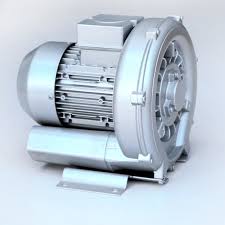Tips for using side channel ventilators
When using side channel ventilators, it’s crucial to prioritize safety, proper installation, and maintenance to ensure optimal performance and longevity. Key considerations include installing a safety valve to prevent overpressure, ensuring adequate ventilation and cooling for the motor, and using vibration and noise dampers to minimize disruptive effects. Regular maintenance, including filter replacement and cleaning, is also essential for sustained efficient operation.
Installation Tips:
- Solid Base:Mount the side channel blower on a solid, flat surface to minimize vibrations that can affect performance and increase noise.
- Correct Alignment:Ensure proper alignment of the blower to prevent stress on the housing and ensure efficient operation.
- Flexible Connections:Use flexible connections for pipes and ductwork to minimize the transfer of vibrations from the blower to the surrounding system.
- Adequate Ventilation:Provide sufficient ventilation around the blower to prevent overheating, especially if it is installed in an enclosed space.
- Weather Protection:If the blower is installed outdoors, ensure it is adequately protected from the elements to prevent damage and maintain performance.
- Accessibility:Ensure the blower is easily accessible for inspection and maintenance.
Operating and Maintenance Tips:
- Safety Valve:Install a safety valve to protect the system from excessive pressure buildup, which can damage the blower and connected equipment.
- Temperature Monitoring:Pay attention to the operating temperature of the blower, ensuring it does not exceed the manufacturer’s specified limit.
- Noise and Vibration Dampers:Use noise and vibration dampers to reduce noise and prevent the transmission of vibrations to the surrounding environment.
- Inlet Filter:Regularly check and replace the inlet filter to prevent dust and debris from entering the blower and affecting its performance.
- Motor Protection:Implement motor protection measures, such as temperature sensors, to prevent overheating and potential damage.
- Maintenance Schedule:Establish a regular maintenance schedule that includes cleaning, filter replacement, and inspection of all components to ensure optimal performance and longevity.
- Consult Manuals:Always refer to the manufacturer’s manual for specific instructions and recommendations for your side channel blower model.
Additional Considerations:
- Special Executions:Be aware of special executions of the side channel blower, such as those with different voltage and frequency requirements, and ensure they are properly configured.
- Ambient Temperature:Ensure the ambient temperature is within the blower’s specified operating range, as extreme temperatures can affect performance.
- Frequency:Do not exceed the maximum frequency (rotational speed) specified on the blower’s nameplate, as this can lead to motor overload or damage.
- Accessories:Utilize accessories like silencers and vibration dampers to optimize the blower’s performance and reduce noise and vibrations.
- Overload Protection:Implement overload protection measures to prevent damage to the blower and motor due to excessive pressure or temperature.
By following these tips, you can ensure the safe, efficient, and reliable operation of your side channel ventilator.
